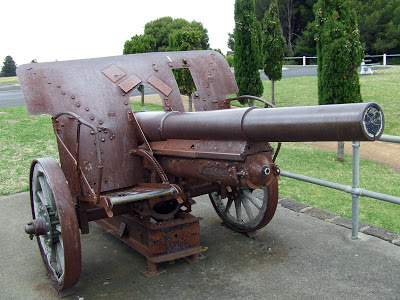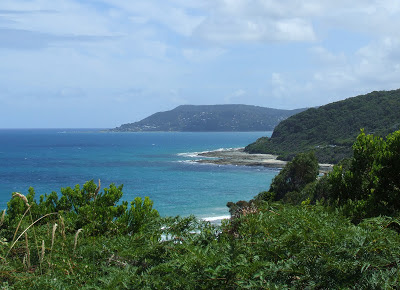 |
| Hopkins River, Victoria |
 |
| War Memorial, Warrnambool |
I'd only heard of howitzers so I was interested to see these from the 1914 - 1918 war. The killing machines certainly have become very much more accurate and efficient in the past hundred years. I was interested to learn that the modern howitzer was invented in the late 1600s by Sweden, a country that is not nowadays quickly associated with war.
 |
| Howitzer 1914 - 1918 |
 |
| Warrnambool |
 |
| Tower Hill Road |
 |
| Emu |
The road continued, passing small lakes until a sign informed us that we had arrived at Tower Hill Reserve. This seemed to be just the kind of place we liked - a peaceful place with trees and water and wild life all around. Noticing that we were sheltered from the wind, we decided to have lunch and then visit the Information Centre to get an idea of what this place was all about.
 |
| Koala in a gum tree |
 |
| Wagon Bay Walk, Tower Hill |
There are several different walks visitors can enjoy and we selected the easiest of these, the Wagon Bay Walk. Our leisurely stroll took us around one of the small lakes, small birds flitting away as we approached and things rustling in the undergrowth - echidnas, I thought, as the rustlings were too noisy for snakes. A one point a fallen tree crossed the narrow track so some contortionism was required to get under it!
 |
| Wagon Bay Lake, Tower Hill |
 |
| Near Tower Hill, Victoria |



























